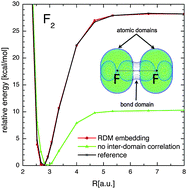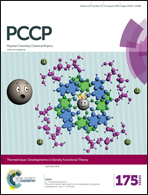Reduced density matrix embedding. General formalism and inter-domain correlation functional
Abstract
An embedding method for a one-electron reduced density matrix (1-RDM) is proposed. It is based on partitioning of 1-RDM into domains and describing each domain in the effective potential of the other ones. To assure N-representability of the total 1-RDM N-representability and strong-orthogonality conditions are imposed on the domains. The total energy is given as a sum of single-domain energies and domain–domain electron interaction contributions. Higher than two-body inter-domain interaction terms are neglected. The two-body correlation terms are approximated by deriving inter-domain correlation from couplings of density fluctuations of two domains at a time. Unlike in most density embedding methods kinetic energy is treated exactly and it is not required that densities pertaining to the domains are only weakly overlapping. We propose to treat each domain by a corrected perfect-pairing functional. On a few examples it is shown that the embedding reduced density matrix functional method (ERDMF) yields excellent results for molecules that are well described by a single Lewis structure even if strong static intra-domain or dynamic inter-domain correlation effects must be accounted for.

- This article is part of the themed collection: Developments in Density Functional Theory

 Please wait while we load your content...
Please wait while we load your content...